Ultimate guide to driving on mountain roads
Mountain roads can be steep and winding with challenging weather. The roads vary from well-formed multilane highways down to little more than tracks. If you’ve never driven in a mountainous region before, here’s the ultimate guide to driving in mountainous areas.
Weather extremes
The higher you go, the colder it gets. Watch out for rapidly changing weather conditions, particularly in winter, where snowstorms can roll in quickly and dump enough snow to block roads. Even though it might be sunny when you start, it can become a blizzard very rapidly. Check local weather forecasts as fog and low cloud can be a problem. The local road authority may issue warnings and road closures and bridge wind restrictions.
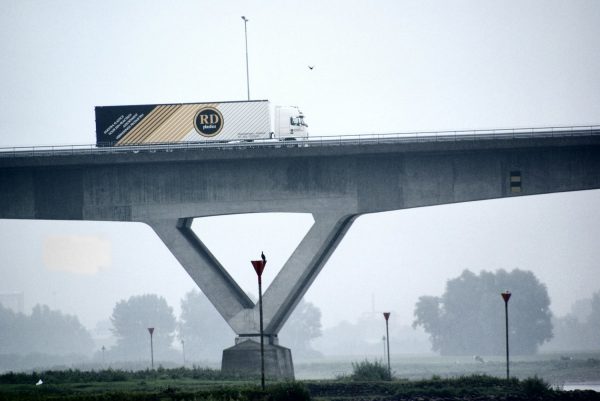
Shaded corners can remain icy the whole day; one side of the mountain will be much more shaded than the other.
Your windscreen washer bottle may need antifreeze.
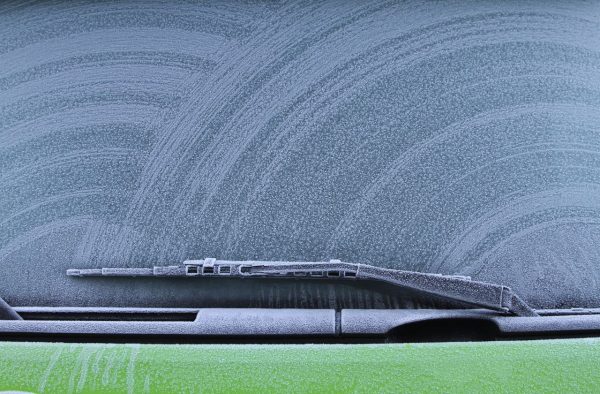
Put your lights on if the weather is bad.
Narrow roads and long vehicles
Roads are cut into the slope of the mountain and it’s expensive to do that, therefore they tend to be narrower than roads built on flat land. This means you have less margin for error. Large vehicles coming towards you might cross over the centre line on tight corners. This is especially common in the European mountain ranges and places like Etna in Sicily.
This narrowness means it’s easier to drive off the side off a mountain and end up many metres below, out of sight of other motorists; people have died waiting to be rescued in these scenarios.
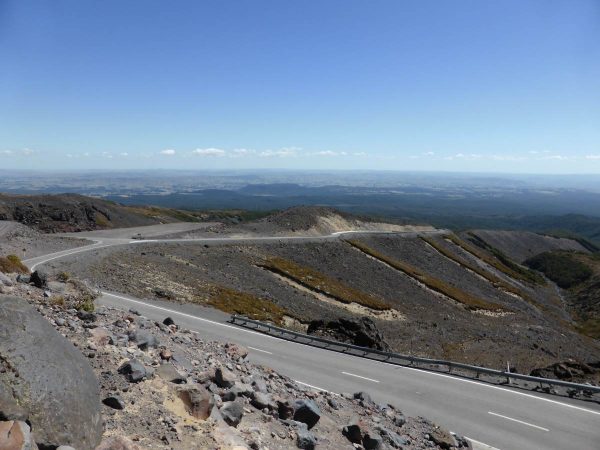
If you are driving slowly and you have a line of other vehicles behind you wanting to overtake, let them past when it’s safe; don’t make them too frustrated otherwise they might try to overtake in a dangerous place.
Some roads are unsuitable for long vehicles and cars towing trailers or caravans.
Emergency gear and supplies
It’s a good idea to carry spare food, water and blankets, particularly if you are travelling across a mountain range in winter. If you expect snow, carry snow chains, an ice scraper and a shovel. Your cellphone should be charged, but there is always the chance you might be out of the coverage area therefore it’s important to let someone else know of your travel intentions. It could take a long time for emergency services to arrive if you’re in a remote area.
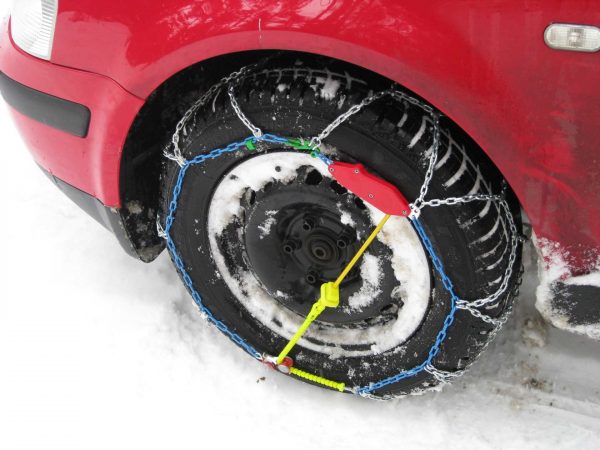
If the weather closes in, don’t leave the car unless you can see a house that is definitely accessible. Staying on the road means you’ll be more visible to rescuers, plus you have the shelter of the car.
Fuel
Mountainous regions are less well-serviced so you will need to ensure you have enough fuel to make your journey and, should your way be blocked, accommodate any detours or waiting period. Remote petrol stations will charge much more than city petrol stations so be prepared for a shock to your wallet if you need to fill up in a small village.
If the mountains you are driving in are really high, the thin air will reduce your engine power
Braking
It’s much more efficient and effective to get your speed right before you hit a steep downhill slope. On the downhill stretches, use your gears to slow down or maintain a lower speed rather than rely on your brakes. If you’re in a heavy vehicle, change down before you get to the downhill gradient. You can easily get to the point of brake fade, especially if you are carrying a heavy load or towing a trailer. As corners in mountain roads are often very sharp, keep your speed down because it will take you longer to slow down. If you are braking heavily as you enter the turn, you are increasing your risk of sliding out.
In a heavy vehicle, it’s best to give your brakes a rest periodically. For example, on a long downhill slope, if your ideal speed is 35mph, brake down to 30mph, get in the right gear so that you are not picking up much speed, then release the brakes and let the speed creep up to between 35-40mph. Then brake again down to 30mph and repeat. This is better than keeping the brakes on all the time as it gives them a chance to cool down.
Sharp turns will usually have advisory speed signs unless the road is remote and little-used.
Uphill vehicles have the right-of-way
On very narrow roads, uphill vehicles have the right-of-way. This ensures that downhill vehicles moderate their speed. When driving uphill, be in the right gear; the engine should neither be straining or racing. Keep an eye on the temperature gauge and if it looks like it’s getting too hot, pull over and let the engine cool down.
Scenic distractions
Mountainous areas can be spectacularly beautiful and spectacularly distracting. If you want to look at the view, have someone else drive or stop at designated scenic lookouts.
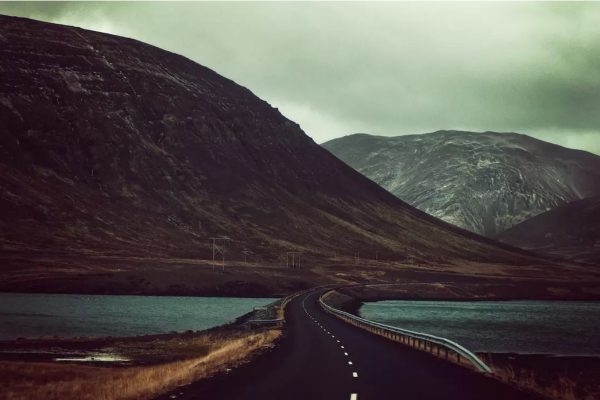
Wildlife
As there tends to be less human habitation and influence, wildlife may be more common in mountainous regions, particularly larger animals like deer that can cause some damage if you hit them.

Sunstrike
When you are driving uphill, your vehicle points more towards the sun and this can exacerbate the problem of sun dazzle or sunstrike. A good pair of driving sunglasses will help.
Unpaved roads
Many mountain roads are unpaved. You’ll find this is quite common in popular scenic holiday destinations like New Zealand.
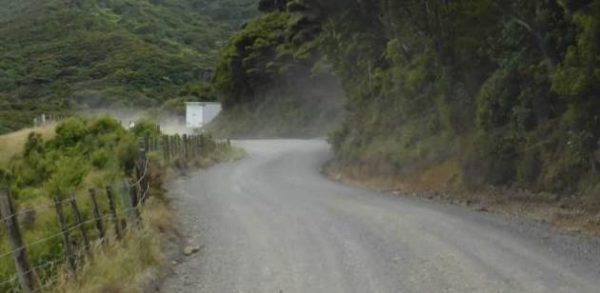
Rockfalls, landslides and washouts
Rocks and other debris can fall on the road at any time, but there is much more risk of a rockfall or landslide immediately after heavy rain, when snow is melting (water freezes to ice in rock cracks, breaking bits off and loosening them and as it melts the rocks can roll down the mountainside) and an earthquake. Rockslides are really dangerous because they can continue to fall even after the main bulk of the rocks have come down. They might be poorly lit and you could come around a corner to find one right in your way.
Washouts are even more dangerous as they can be difficult to see. This is where a portion of the road washes down the slope. If you drive into one, you’ll be tumbling down the slope, too.
Know where you are going
GPS performance can be patchy in some mountain areas. Downloading the local map to your cellphone is helpful if you are using GPS.
- Understanding the National Standards for Riding Mopeds and Motorcycles
- Livestock Transport Rules UK: A Complete Guide to Animal Transportation Requirements
- The Role of Safety Advisers in Dangerous Goods Transport
- Sustainable Driving: Reducing Your Environmental Impact on the Road
- Developing Effective Lesson Plans for Driver Training
- UK Agricultural Vehicle Registration and Tax Relief
- Challenges of Transporting Radioactive Materials (Class 7)
- Exemptions and support for Clean Air Zone charges
- Navigating Legal Requirements: The UK Motorcycle Licensing Rules
- Safe Transportation of Agricultural Chemicals and Hazardous Materials
- Innovations in Vehicle Construction for ADR Compliance
- Motorcycle Recovery Operations: How to Recovery a Broken Down Motorbike
- Alternative Fuels in Agricultural Vehicles
- Carriage of Dangerous Solids in Bulk Containers
- Understanding Limited Quantity Exemptions in ADR